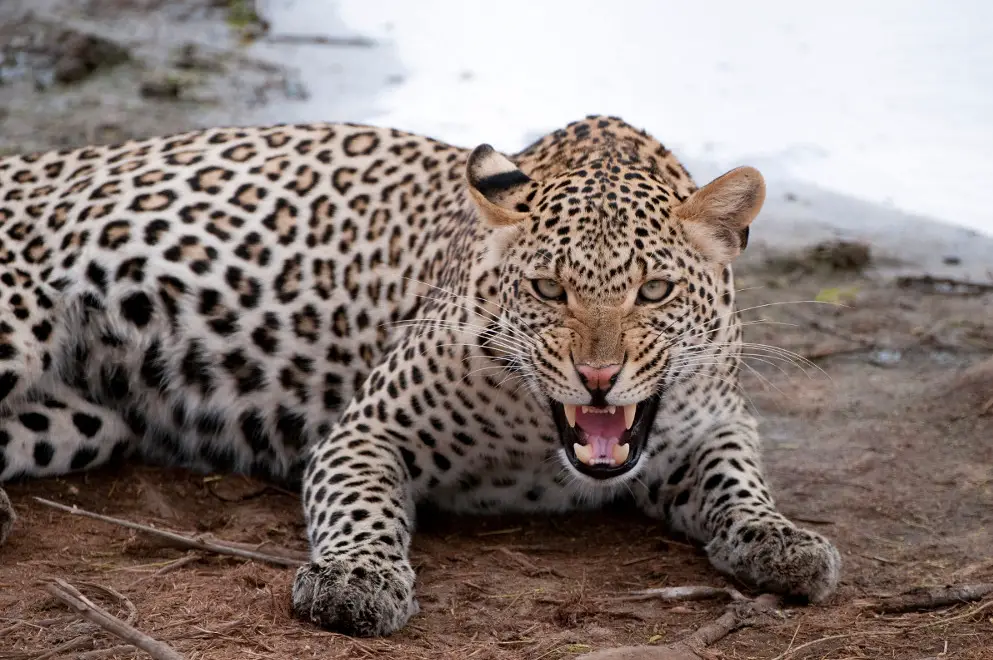The African leopard (Panthera pardus pardus) is the largest spotted cat in Africa. It typically lives in the rainforests of sub-Saharan Africa. Depending on location and habitat, African leopards have varied coloration of coat. The leopards living in the Cape provinces are likely to be physical different from the northern population.
African Leopard Facts
Anatomy
- African leopards are mainly recognized by their pale yellow to tawny coat which is dominated by black rosettes.
- Males are larger than the females. Adult males weigh 60 kg (130 lb) while females averaging 35 to 40 kg (77 to 88 lb) in weight.
Range & Habitat
- The African leopard is known to occupy the arid deserts and rainforests of sub-Saharan Africa. They prefer to live in habitats which receive 50 mm rainfall each year.
- Leopard’s habitats are found at an altitude of about 5,700 m (18,700 ft). Some of its population occurs in the Virunga National Park. They are thought to make homes in grasslands, savannas, arid deserts, and mountainous forests.

Behavior
- African leopards remain active from dawn to dusk. They make use of daylight hours by killing as much prey as they can. After killing the prey leopards usually grab it and climb up the tree to avoid competitors.
- Sometimes both males and females become active during night and this happens in the Kruger National Park.
- As they adapt to living in varied habitats leopards can also adjust themselves according to the availability of prey.
Feeding Ecology & Diet
- African leopards are carnivores and they like to hunt small mammals whereas large ungulates are rarely killed. Prominent among the leopard’s diet are rodents, arthropods, birds, and antelopes.
- They are able to kill prey as large as adult elands weighing 900 kg.
- African leopard’s diet includes dung beetles, hyraxes, hares, Thomson’s gazelle, genets, reedbuck, jackal, zebras, mongooses, impala, guineafowl, dik-dik, duiker, steenbok, wildebeest, warthog, kongonis, and giraffe. They also eat pangolins and porcupines.
- Leopard’s neck is powerfully built and it is strong enough to carry young giraffe high into the trees. Unlike other big cats, leopards are able to carry 125-kilogram prey up to 19 feet high into the trees.
- Reptiles also form the essential part of leopard’s diet but domestic livestock are rarely consumed.
- Leopards are typically known for their surprise attacks and they are likely to get as close possible (to the prey) as they can before the final run.
- African leopards do not fight other animals for the kill.






Leave a Reply